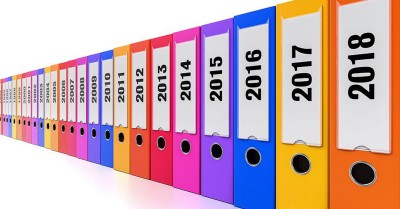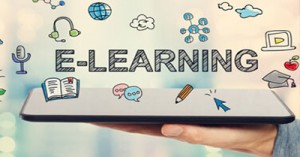Whether you are reflecting on yourself or reflecting on others, reflective practices provide you with an opportunity to learn and draw open diverse knowledge, views, experiences, views and attitudes within yourself and others.
The following questions are to be used as a guide for reflecting on each of the standards within Quality Area 7. Use the information from these questions to recognize good practice or to change and improve what is not working well. It can also be used as part of Self-Assessment or Quality Improvement Plan.
Questions to guide reflection on practice for Standard 7.1
• What are the strengths of our management and administration systems that contribute to delivering a quality service for children and their families?
• How does our service’s governance contribute to the development of a service vision and purpose?
• How do we determine the appropriate management and governance structure at our service?
• How do we support the development of effective leaders at the service?
• What is the process for making decisions within the service and is this process fair and equitable?
• How can we improve the efficiency and effectiveness of our systems and processes?
• Does our management of confidential information meet requirements?
• To what extent does our statement of philosophy reflect our purpose, guide our practice and show a commitment to continuous improvement?
• How and when is our statement of philosophy reviewed?
• How do we address complaints? How is the complaints management process used to identify strategies for quality improvement?
• Is our complaints management system/process effective in supporting quality improvement and empowering families to express their concerns and suggestions?
• How can we ensure that families are able to contact the appropriate person when making a complaint?
• What systems are in place to ensure the service’s compliance with the National Law and Regulations?
• What systems are in place to regularly check the currency and validity of working with children checks, teaching registrations, first aid qualifications, and anaphylaxis and asthma management training?
• How and when are our policies and procedures reviewed?
• What systems are in place to ensure policies and procedures are being used to inform practice and is this information being communicated to families in respectful ways?
• How does the service involve stakeholders in consultation, evaluation and advisory processes?
• What information is provided to families about our governance structures?
Questions to guide reflection on practice for Standard 7.2
• How is the leadership in our service contributing to the development of a positive organisational culture?
• How can we develop the skills and capacity of team members in a way that leads to improved shared leadership?
• How are we creating opportunities for professional conversations?
• How do our performance management processes support continuous improvement?
• How can we share the collective knowledge of the team?
• What do we know about the rate of, and reasons for, turnover of educators, coordinators and staff members at this service?
• How can we structure our staffing arrangements to improve continuity of care for children?
• How does the evidence/data we collect inform our self-assessment and quality improvement processes? Do we need to collect additional or different data?
• How are children, families and communities included in evaluating the quality of our service?
• In what ways does our service analyse feedback, complaints, serious incidents, injuries and illness to drive continuous improvement?
• How are resources allocated and targeted to support our quality improvement plan?
• How do we raise awareness of inclusion amongst service staff, and support educators to promote and reduce the barriers to inclusion for all children and families?
• What strategies are proving successful in building a professional learning community? How do we know they are successful
• How can we use the Assessment and Rating Instrument in our self-assessment process?
• How can the guiding principles of the National Law be considered in our self-assessment process?
For more information on how to write Reflections: Reflective Practices In Childcare
Reference:
New Guide To The National Quality framework, ACECQA, Oct 2017







 Here is the list of the EYLF Learning Outcomes that you can use as a guide or reference for your documentation and planning. The EYLF
Here is the list of the EYLF Learning Outcomes that you can use as a guide or reference for your documentation and planning. The EYLF The EYLF is a guide which consists of Principles, Practices and 5 main Learning Outcomes along with each of their sub outcomes, based on identity,
The EYLF is a guide which consists of Principles, Practices and 5 main Learning Outcomes along with each of their sub outcomes, based on identity, This is a guide on How to Write a Learning Story. It provides information on What Is A Learning Story, Writing A Learning Story, Sample
This is a guide on How to Write a Learning Story. It provides information on What Is A Learning Story, Writing A Learning Story, Sample One of the most important types of documentation methods that educators needs to be familiar with are “observations”. Observations are crucial for all early childhood
One of the most important types of documentation methods that educators needs to be familiar with are “observations”. Observations are crucial for all early childhood To support children achieve learning outcomes from the EYLF Framework, the following list gives educators examples of how to promote children's learning in each individual
To support children achieve learning outcomes from the EYLF Framework, the following list gives educators examples of how to promote children's learning in each individual Reflective practice is learning from everyday situations and issues and concerns that arise which form part of our daily routine while working in an early
Reflective practice is learning from everyday situations and issues and concerns that arise which form part of our daily routine while working in an early Within Australia, Programming and Planning is reflected and supported by the Early Years Learning Framework. Educators within early childhood settings, use the EYLF to guide
Within Australia, Programming and Planning is reflected and supported by the Early Years Learning Framework. Educators within early childhood settings, use the EYLF to guide When observing children, it's important that we use a range of different observation methods from running records, learning stories to photographs and work samples. Using
When observing children, it's important that we use a range of different observation methods from running records, learning stories to photographs and work samples. Using This is a guide for educators on what to observe under each sub learning outcome from the EYLF Framework, when a child is engaged in
This is a guide for educators on what to observe under each sub learning outcome from the EYLF Framework, when a child is engaged in The Early Years Learning Framework describes the curriculum as “all the interactions, experiences, activities, routines and events, planned and unplanned, that occur in an environment
The Early Years Learning Framework describes the curriculum as “all the interactions, experiences, activities, routines and events, planned and unplanned, that occur in an environment


